It’s hard to believe that the High School for Performing and Visual Arts opened its doors 50 years ago. I don’t know if that first class in 1971 included all four years of high school, or if 1971 was freshmen only. If so, the first graduating class was in 1975. As far as I can tell, HSPVA was part of Houston Independent School District’s attempt to avoid bussing. It was a magnet school hoping to “integrate” by virtue of attracting students of all races who were interested in the arts. But it has become a legendary school in Houston. It is the kind of school I would have loved to have attended, but I was not in HISD—I was in a suburban school district called Spring Branch Independent School District. I didn’t even know it existed until I got to college. But I was in love with the idea of an arts high school. I was an avid fan of the movie Fame (1980) which came out when I was a junior in high school. I didn’t really know about HSPVA until I came to Rice University, where some of my classmates were from HSPVA. If you’ve ever seen the movie Everybody Wants Some (2016), there is a character Beverly who hooks up with a freshman Jake. Jake is there on a baseball scholarship and Beverly, played by Zoey Deutsch, is a theater major. The movie is a quasi-autobiographical story by director Richard Linklater. He had been a jock in college until he had his mind blown by some artsy students (possibly from HSPVA). Beverly tells Jake about HSPVA.
Jake: Where did you go to high school?
Beverly: HSPVA. Which although it sounds like a venereal disease, it stands for the High School for the Performing and Visual Arts.
Jake: Like the one in Fame?
Beverly: Kind of. We weren’t spontaneously performing in the streets in large groups or anything, but we were so ridiculous! The theater kids would be hysterically crying in the bathroom stalls, the visual artists would be like [she mimes snorting cocaine] anything they could find, dancers [mimes forcing her fingers down her throat], and musical theater kids [singing] La-la-laaa! It was so fun—I loved it! Yeah, I loved it. And it was a great place to cultivate the thing you loved most in life, you know.
It’s a corny scene where young college-age singles are feeling each other out. I don’t know how true her brief descriptions of each type of student were, but I’m sure they were more-or-less right at various points in HSPVA’s history.
HSPVA has been an important part of Houston’s art scene for decades, longer than many other institutions that are essential parts of Houston’s creative community. It’s been here longer than Lawndale, the Menil Museum, Diverse Works, etc. But for a bunch of reasons, it doen’t have the recognition locally that many of those other institutions.
When I first became aware of it in the 80s, they were housed in a small high school building in Montrose—kind of the perfect location. An arts high school in the middle of Houston’s artsiest neighborhood. And I think that was a good location but from what I understand, the school population was outgrowing the building. So they came up with a bold solution—build a new campus in the middle of downtown among the skyscrapers. Considering that downtown has no other K-12 schools, moving HSPVA there changes the character of downtown. I remember reading that part of the reason was that it would put them near all the really big performing arts centers (the Symphony, the Opera and the Alley Theater are all just a few blocks away).
They got the a big grant from the Kinder Foundation, which is the family foundation of Rich and Nancy Kinder. Rich Kinder was the founder of a huge oil and gas pipeline company called Kinder Morgan. For their $7.2 million grant, they got to name the school which is now officially the Kinder High School for the Performing and Visual Arts. Many alums don’t like this change, and as a non-alumnus, I agree. The name was a mouthful before—now it’s just ridiculous. When I think of oil and gas pipelines, I don’t think of art. I will always just refer to it as HSPVA, but I’m sure that as we olds die off, the Kinder name will become more fixed.
The new building takes up a city block and looks remarkably mod and high tech. I’m sure it is a great building to go to school.
This photo was taken from the General Academic website and is used without permission.
To celebrate 50 years of HSPVA, there is a large show of art by HSPVA graduates on display at Diverse Works. The show is called The Happening, and it closes today, November 27. Here are some of the artworks, in order of graduating class.
Liz Ward, class of 1977
Ghosts of Old Mississippi: Issaquena County (Muddy Waters), 2019. Ward is a fixture in the Houston arts scene, although now she lives in San Antonio. I saw her work recently at the Museum of Fine Arts in the new Kinder building. (When billionaires reach a certain age, they spend time and money putting their names on cultural and academic buildings.) The MFAH has 11 pieces by Ward, but none are currently on view, according to their website.
Janice Freeman, class of 1977
Language Poof, 2021. Freeman is an artist I had never heard of until I saw this piece, but I liked its organic feeling.
Chris Bexar, class of 1979
Weslayan Sway, 2016. I am mostly familiar with Bexar’s work like this where he digitally warps skyscrapers into delightfully curvy, unstable forms.
Jamal Cyrus, class of 1991
I Won’t Even Mention Gold, 2014. Cyrus has been a vigorous participant in Houston’s art scene. A member of Otabenga Jones & Associates, with whom he was in a Whitney Biennial, his work ranges from paintings to installations to performances. When a good artist arises from Houston, I often expect them to move on to a more major art capitol to gain fame and fortune. Cyrus would be a candidate for this, but he has stayed in Houston. It’s a miracle!
Daniel Heimbinder, class of 1991
top: Bull by the Horns/Tiger by the Tail, 2021. Bottom: Ghost Circus, 2021. These two small paintings are very different from the work by Heimbinder that I am familiar with, which were enormous surreal drawings of pants and shoes.
Kaneem Smith, class of 1991
Laborscape #11, 2021. 1991 seems to have been a strong year for visual artists at HSPVA. Kaneem Smith is the daughter of sculptor George Smith, who taught at Rice while I was a student there. Her work frequently involves fabric, especially cotton, and occasionally features raw cotton. One is asked always to remember who picked the cotton, who worked in the cotton mills, who wove it, etc. She has a large piece in the Dirty South exhibit at the CAMH.
Christopher Cascio, class of 1995
Untitled (Half-square pinwheel quilt), 2020
Untitled (Half-square Sawtooth Quilt), 2020
I’ve known Christopher Cascio for a while, and his work has gone through a variety of changes that all make sense if you see them gradually unfold. When I met him, he was making high-contrast paintings of ads from old music magazines. (I have one of these.) Then he started making giant collages of ads found in the back of sleazy old magazines—drug paraphernalia, sex toys, escort services, etc. He was like a pop artist of the sin economy. He stared making collages of nightclub wrist bands, which evolved into more purely abstract images. And these two quilts feel like a logical progression from them. He’s gone from a chronicler of adolescent party culture to a purveyor of nice, respectable bourgeois art!
Lovie Olivia, class of 1995
Tussle, 2021. With a name like “Lovie”, one expects Olivia to be a kindly old aunt. But she is instead a young, fierce painter. Her latest work I have see is much like Tussle—women’s bodies engaged in vigorous physical activity. These latest paintings have a dense layered quality that appeals to me a lot. Her earlier work that I’ve seen involved images that could only be seen in mirrors.
Anthony Suber, class of 1998
Griot Gospel, Huey, 2020. I’ve seen Suber’s work in various places over the past few years, memorably in Chastity Porter’s portable gallery Dormalou Project. This combination of African tribal object and modern culture was part of his work then.
Robert Hodge, class of 1998
Promise You Will Sing About Me, 2019
Hodge’s work is dense and layered, full of history. His work has been in the Contemporary Arts Museum (and he has a piece in the Dirty South show that is up now) and many other venues.
Patrick Renner, class of 2000
Frankenstein Method, 2015. Patrick Renner is another artist I’ve known for a while. He is a master of assemblage, employing scrap wood and objects in ways that recall the California assemblagists, Ed Kienholz, Wallace Berman and George Herms. He was one of the last artists I wrote about before COVID closed down eveything. Now that life is starting up again (let’s hope Omicron doesn’t hit us too harshly…), it’s a real pleasure to see more work by Renner.
Jacques Louis Vidal, class of 2000
Back to School Special, 2020.
Back to School Special detail, 2020. I know nothing about Vidal, but I liked this piece—it seemed almost as if it were made for a show about a high school (the lockers in the background).
Dylan Conner, class of 2007
Mended Post, 2017. Most of Conner’s work that I have seen employs creamy plaster mixed with industrial junk. He comes up with witty ways of molding the plaster into weirdly organic shapes. I have one of his pieces and it is by far the heaviest piece of art I own. But he isn’t wedded to the use of plaster—see his amazing Firefly Field in Woodland Park.
[Please consider supporting my work by becoming a patron.]







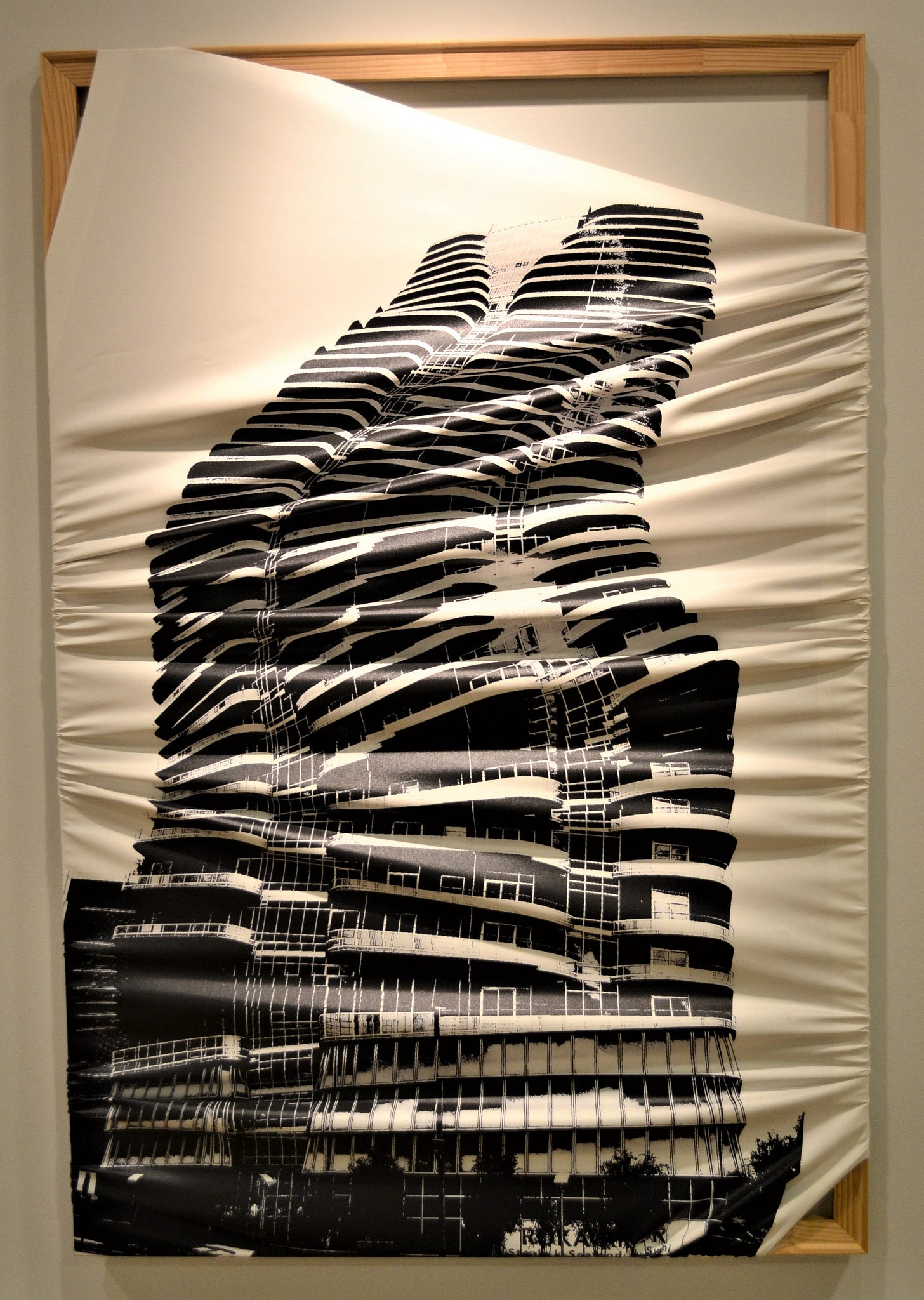

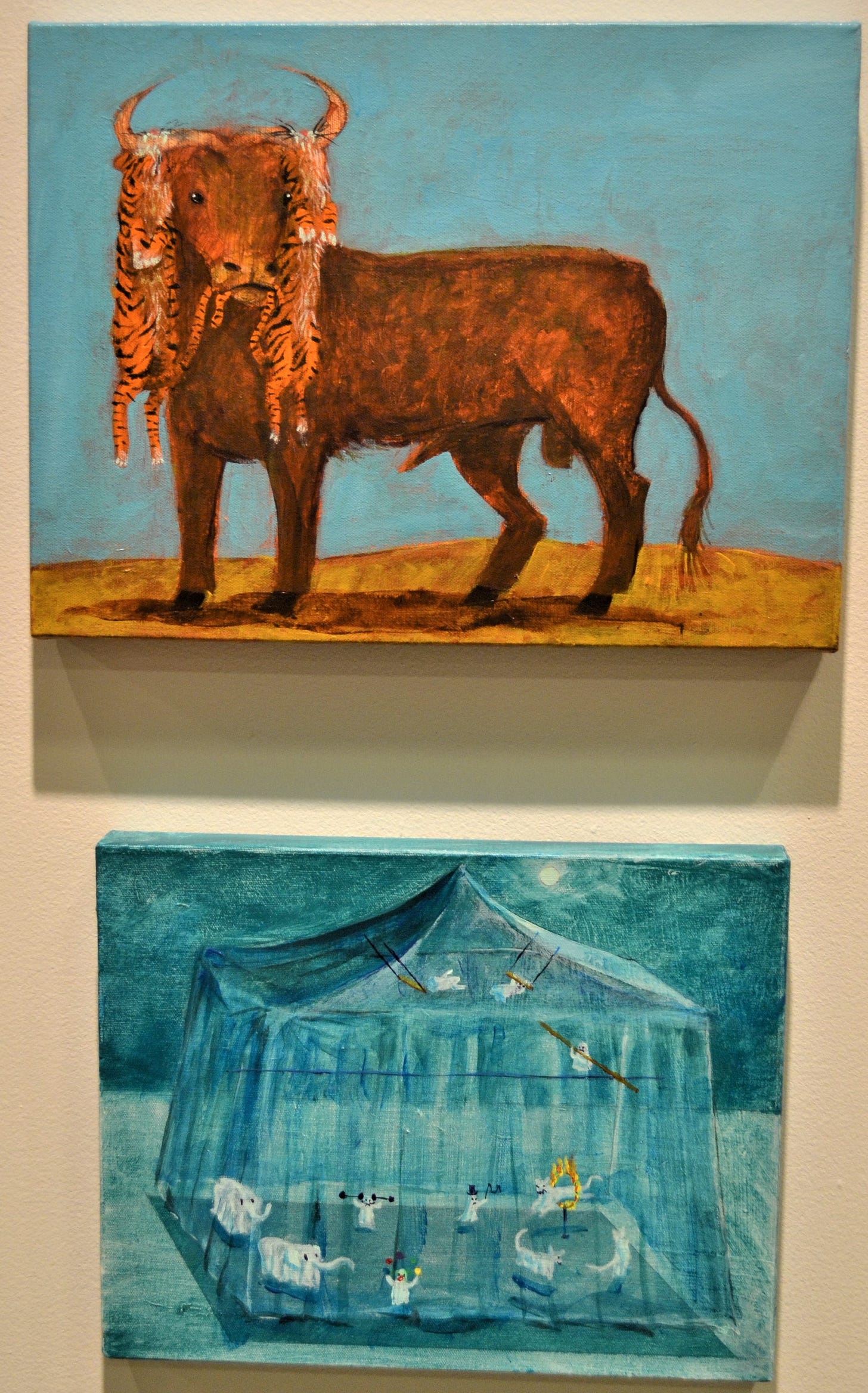
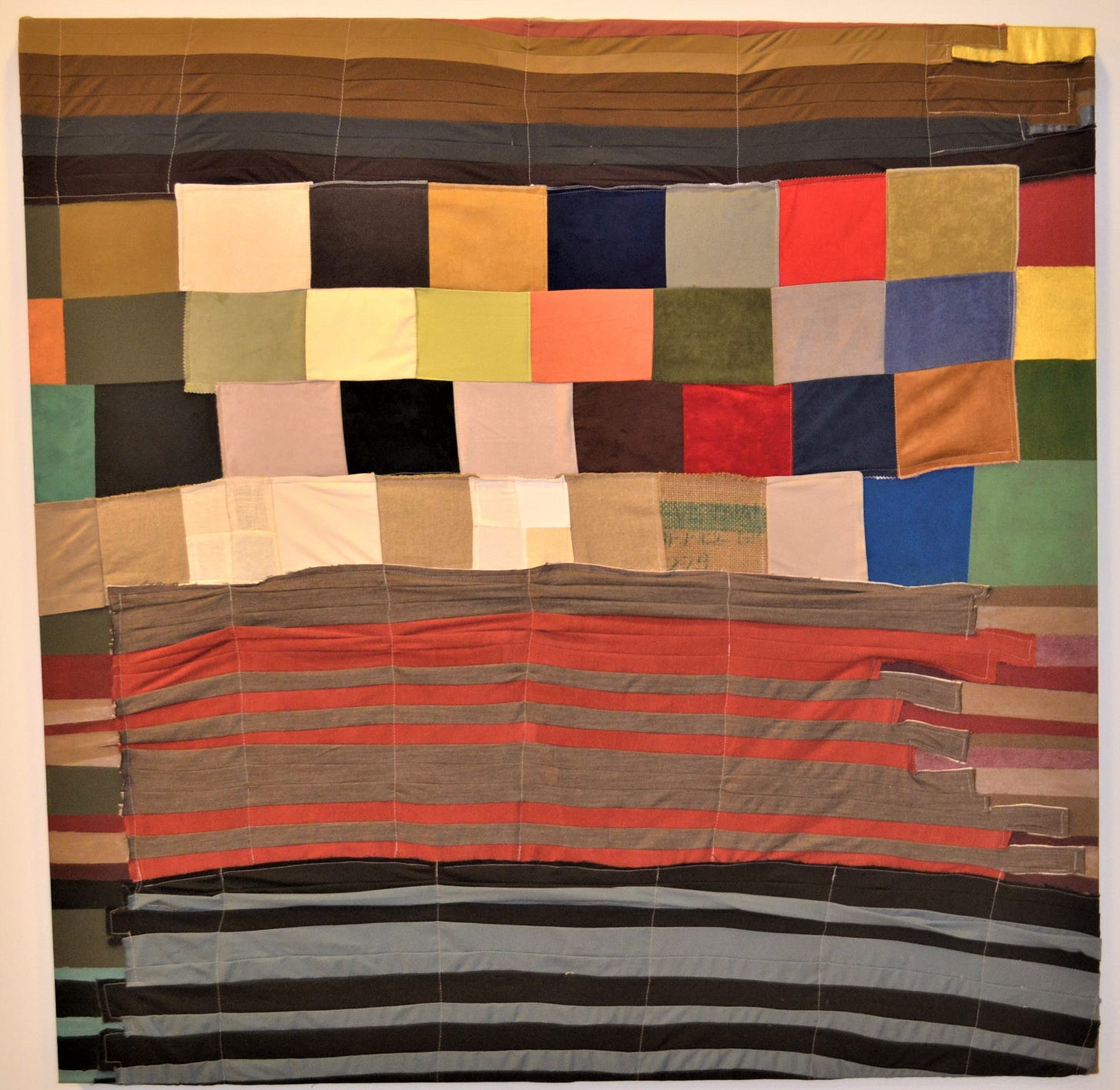






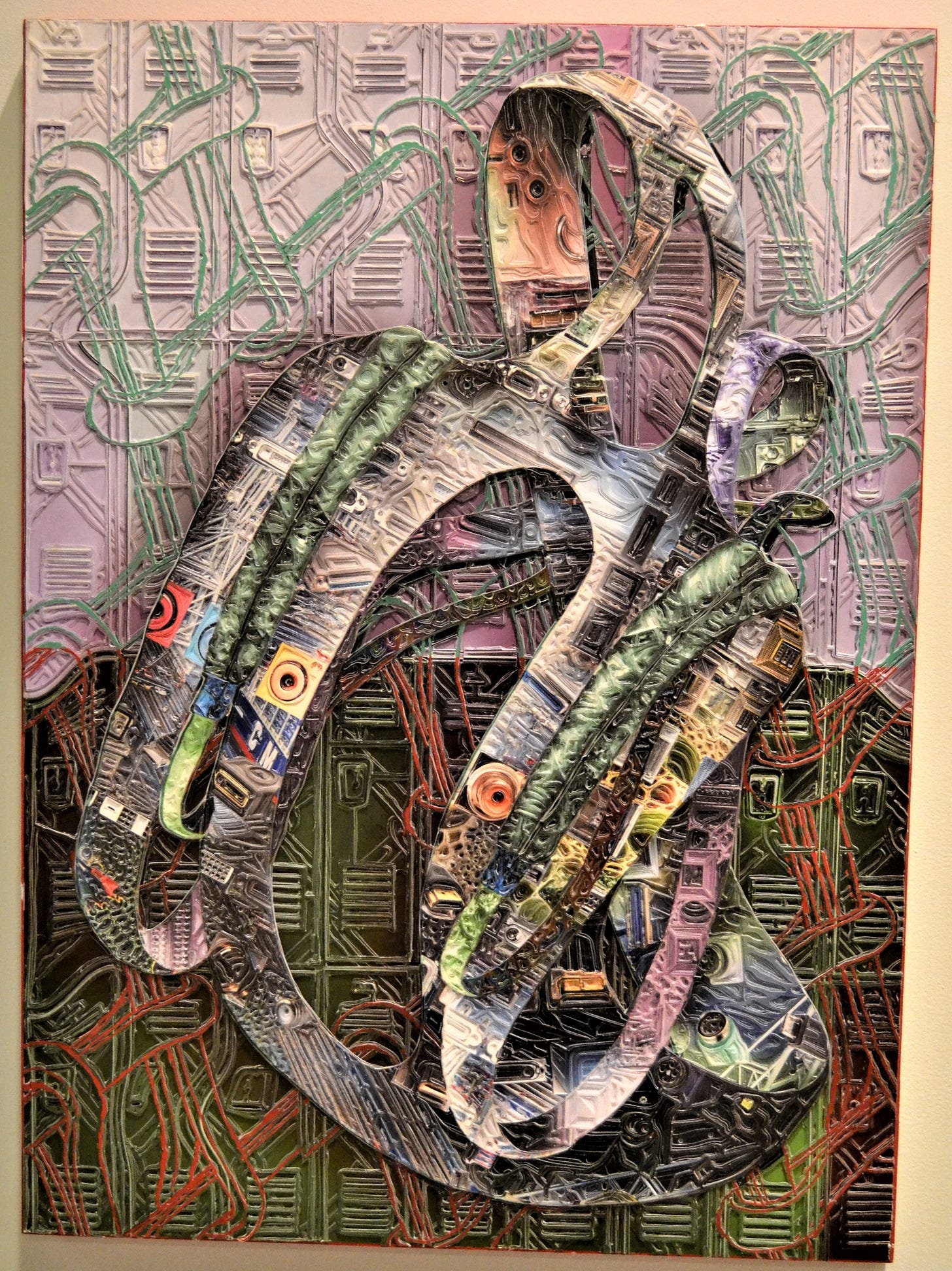

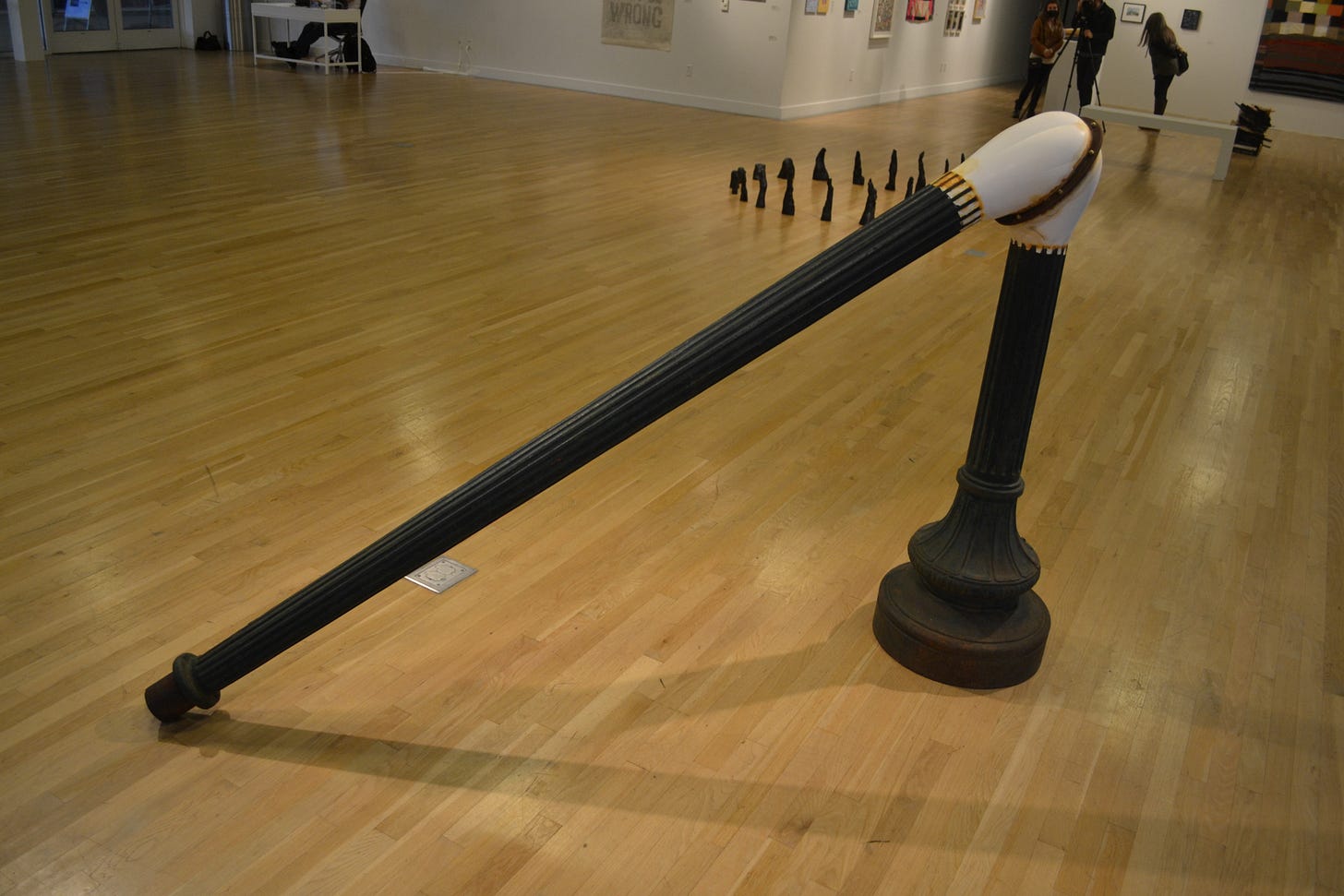
Thanks for highlighting my alma mater. HSPVA was a magical place to attend high school, and as a very troubled teen it quite literally saved my life. I was there from ‘72 to ‘75 and was in the second graduating class (the first was ‘74). Your readers might find some details of the early years interesting. High school was grades 9-12 back then and the first two years of PVA featured a surplus of sophomores and juniors and a few seniors who took their arts classes at PVA and academics at their regular school where they graduated. Ruth Denny (principal) and Ed Trongone (Instrumental Music) founded the school at the old Beth Israel Temple (present day site of a community college). It wasn’t really in Montrose, but on the edge of down town, at 3517 Austin Street, across the street from Houston Technical Institute (which is where Walter Cronkite attended high school). We all knew how lucky we were to be there so there was exactly ONE fight my entire 3 years. Approximately 1/3 each White, Black, and Latino (the big Vietnamese influx didn’t happen until after Saigon fell in ‘75) it was a great cultural leveler. Unlike other Houston schools there was precious little open harassment of apparent or suspected gay students. Believe me, HSPVA was WAY ahead of its time in that regard. In fact, one of my gay friends told me it was the only place he felt comfortable just being himself. Keep in mind this was only 2-5 years after Stonewall.
It was also a great education for those of us raised in racist environments because 1. We were young enough to adapt, and 2. there was zero tolerance for any type of racism. We knew how easy it was to be sent back to wherever we were originally zoned.
I have yet to talk to any graduate from my era who wasn’t grateful for the opportunity and who didn’t see PVA as a highlight of their educational years.
One small quibble with the school as depicted in the movie: although pot smoking (off campus) was not uncommon, cocaine was extraordinarily rare. With about 500 students, our arts family was hard to keep secrets from and I never once heard of anyone snorting coke. Also, outside of other major cities and age groups in the 70s, cocaine really was much more of a 1980s phenomenon. Until Len Bias’s death of course, which killed the curiosity of most people with half a brain.